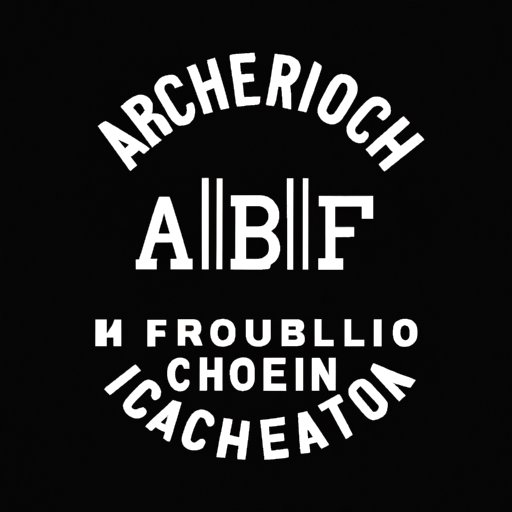Introduction
Fast fashion has become an integral part of the modern retail industry, offering consumers on-trend clothing at low prices. But what are the implications of this popular practice? Abercrombie & Fitch, one of the largest fashion retailers in the world, has been scrutinized for its fast fashion practices, yet it is making strides to redefine fast fashion with sustainable solutions. In this article, we will explore the environmental and social cost of Abercrombie & Fitch’s fast fashion practices, as well as how the company is attempting to combat these issues with ethical manufacturing, recycling, and improved distribution practices.
Exploring the Impact of Abercrombie & Fitch’s Fast Fashion Practices
The environmental cost of fast fashion is well documented. The production of clothing requires large amounts of water, energy, and resources, resulting in a significant amount of carbon emissions. Additionally, the use of synthetic materials such as polyester, nylon, and acrylic contribute to microplastic pollution in the environment. Abercrombie & Fitch uses many of these materials in their clothing, which contributes to these environmental impacts.
The social cost of fast fashion is equally concerning. Many of the clothes produced by Abercrombie & Fitch are manufactured in countries where labor laws are not enforced. This means that workers are often paid low wages, work long hours in unsafe conditions, and lack access to basic necessities such as clean water and healthcare. On top of this, the company has been criticized for its advertising campaigns, which have been accused of promoting a damaging body image.
How Abercrombie & Fitch is Redefining Fast Fashion with Sustainable Solutions
In recent years, Abercrombie & Fitch has taken steps to reduce its environmental and social impact. The company has implemented a recycling program that allows customers to return used items to be reused or recycled into new products. They have also committed to using more sustainable materials, such as organic cotton and recycled polyester, in their clothing.
Abercrombie & Fitch has also made progress in ethical manufacturing, partnering with factories that adhere to fair labor practices. This includes providing employees with living wages, safe working environments, and access to basic necessities. The company has also pledged to improve their distribution practices, reducing their reliance on air freight and switching to more eco-friendly shipping methods.
The Pros and Cons of Shopping at Abercrombie & Fitch for Fast Fashion
Shopping at Abercrombie & Fitch for fast fashion has both pros and cons. On the plus side, the company offers fashionable clothing at affordable prices. They also offer a wide selection of sizes and styles to suit different body types. Additionally, their commitment to sustainability and ethical manufacturing is a positive step towards improving the fashion industry.
On the downside, the quality of Abercrombie & Fitch’s clothing can be questionable. Many customers have complained about the poor craftsmanship of the garments, which doesn’t bode well for longevity. Additionally, there have been reports of unethical labor practices in some of their factories, which could be cause for concern.
Shopping Smartly: Understanding the Ethics of Abercrombie & Fitch’s Fast Fashion
When shopping for fast fashion, it’s important to consider the ethics behind the products you are buying. Researching the materials used in the garments is a good place to start; make sure they are sourced from sustainable sources. Supporting fair labor practices is also key; look for companies that are transparent about their manufacturing processes and ensure workers are treated fairly.
It’s also important to look for quality over quantity when shopping for fast fashion. Buying fewer items that are better quality will last longer and save money in the long run. Additionally, investing in timeless pieces that won’t go out of style will help reduce waste and keep your wardrobe up to date.
Analyzing the Consumer Culture of Abercrombie & Fitch’s Fast Fashion
In order to understand the impact of fast fashion, it’s important to analyze the consumer culture surrounding it. Consumers have grown accustomed to the convenience and affordability of fast fashion, which has resulted in a demand for more and more clothing. This demand has driven companies like Abercrombie & Fitch to produce clothing quickly and cheaply, leading to the environmental and social costs mentioned above.
Advertising has also played a role in the proliferation of fast fashion. Companies like Abercrombie & Fitch use advertisements to promote their latest collections, creating an urgency among consumers to buy the clothes before they go out of style. This encourages people to purchase more than they need, which contributes to the problem of overconsumption.
Finally, it’s important to recognize the responsibility of consumers when it comes to fast fashion. We have the power to choose which companies we support and what kind of clothing we buy. By being mindful of our purchases and researching the ethics behind them, we can make a difference in the fashion industry.
Conclusion
Abercrombie & Fitch has been criticized for their fast fashion practices, but they have taken steps to redefine fast fashion with sustainable solutions. They are implementing a recycling program, using more sustainable materials, and partnering with factories that adhere to fair labor practices. While shopping at Abercrombie & Fitch for fast fashion has its pros and cons, it’s important to be mindful of the ethics behind the products we purchase. By understanding the demand for fast fashion and recognizing our own responsibility as consumers, we can make informed decisions that will benefit ourselves and the environment.


